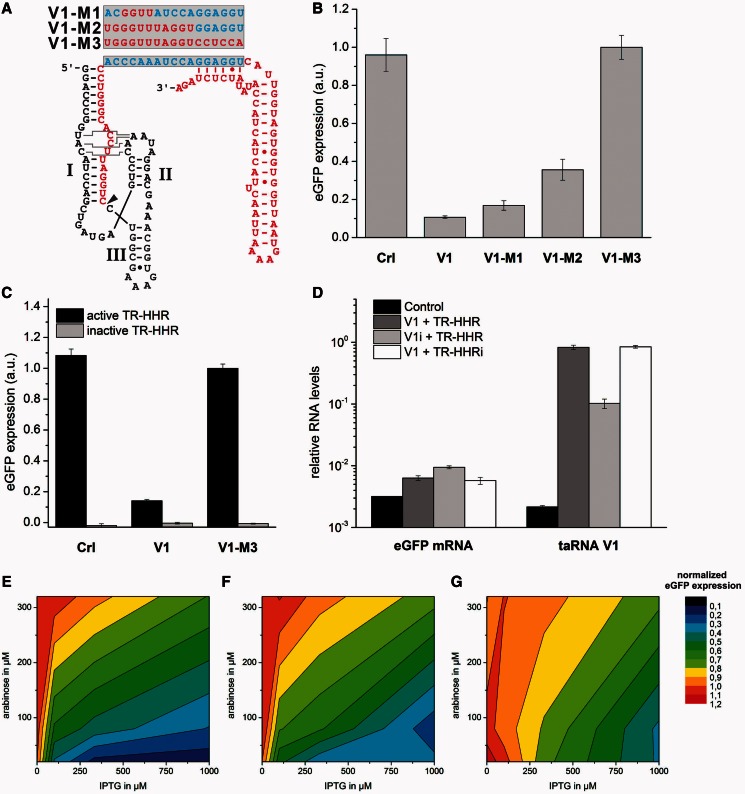Figure 3.
The sRNA-mediated repression of translation depends on the formation of the RNA–RNA hybrid structure. (A) Schematic illustration of artificial taRNA variants with reduced number of complementary nucleobases to the taRNA responsive element was constructed. The constructs V1-M1 and V1-M2 display partial hybridization capability (blue nucleobases), whereas the construct V1-M3 is non-complementary at all. The site of 5′-processing is marked by an arrow head. All taRNA constructs were engineered under control of an IPTG-inducible promoter. (B) The influence of the taRNAs shown in (A) on the TR-HHR activity was examined. Bacterial cultures of the E. coli Top10 strain were induced with 20 µM arabinose and 1 mM IPTG. Transformants were cultivated in LB medium at 37°C, and eGFP expression of outgrown bacterial cultures was measured. Error bars represent the standard deviation of experiments performed in triplicates. (C) The inactivation of the TR-HHR results in non-detectable eGFP expression levels and was not influenced by the co-expressed taRNAs Crl, V1 and V1-M3. The assay was performed as described earlier in the text. (D) Analysis of eGFP mRNA and taRNA levels by semi-quantitative RT-PCR. Bacterial cultures were induced with 20 µM arabinose and 1 mM IPTG. Results indicate a high excess of taRNA over eGFP mRNA transcripts and an accumulation of taRNA V1 through the 5′-processing reaction of the HHR. (E–G) Heat maps of observed repression of translation by the constructs (E) V1, (F) V1-M1 and (G) V1-M2 as function of transcriptional induction of the reporter construct and the taRNAs. Data were normalized to the construct V1-M3. Transcription of the reporter gene was induced by the addition of 20, 80 and 320 µM arabinose, and transcription of the taRNA variants was induced by the addition of 0, 100, 333 and 1000 µM IPTG. The translational repressed state is indicated in blue, whereas the unrepressed state is shown red. Bacterial cultures of the E. coli Top10 strain were induced with arabinose and IPTG as indicated. Transformants were cultivated in LB medium at 37°C, and eGFP expression of outgrown bacterial cultures was determined.

